Pâte à Accras: The No-Fail Caribbean Fritter Batter You’ll Want on Repeat
If you’ve ever wandered through the streets of a Caribbean island during a festival, holiday, or even just a weekend market, chances are you’ve caught a whiff of something deep-fried, crispy, herby, and oh-so-irresistible. That, my friend, is the glorious world of accras — also known as Caribbean fritters. And today, we’re diving into the heart of it all with a no-fail pâte à accras recipe you’ll want to bookmark, laminate, and maybe even frame.
But first — let’s talk about what this tasty tradition is really all about.

What Exactly Are Accras? A Taste of History
Accras are more than just a snack; they are a flavorful piece of culinary history.
The Name and Its Roots
The word “accras” (sometimes spelled “acras” or “akras”) refers to small savory fritters, especially in the French-speaking Caribbean. However, the dish’s heritage traces back to West Africa, where similar fritters called akara are made from black-eyed peas.
Brought over by enslaved Africans and adapted in each Caribbean kitchen, the dish became a powerful symbol of resistance and adaptation. The ingredients might have changed based on what was available, but the spirit of a spiced, fried bite of comfort remained.
What’s Inside?
Accras are incredibly versatile! The base batter is what holds it all together, but the main ingredient can vary:
- Salted Codfish (Morue): The quintessential classic, especially in Haitian and French Caribbean kitchens (accras de morue).
- Root Vegetables: Like malanga (Haitian akras), taro, sweet potatoes, or carrots.
- Legumes: Such as black-eyed peas (the traditional West African akara).
- Other Proteins: Cooked, shredded chicken or shrimp are also delicious additions.
No matter the main filling, the signature bold flavor comes from a generous blend of fresh herbs, garlic, scallions, and a crucial kick of hot pepper like Scotch bonnet.
The Island Variations: Accras Across the Caribbean
While the core concept of a savory, fried fritter remains, each Caribbean island has given the accra its own distinct, flavorful personality.
Haitian Akras (Accras)
Haitian akras are most famously made with malanga, a starchy root vegetable similar to taro, though saltfish is also common. The root vegetable is finely grated and blended with a vibrant seasoning base known as epis—a blend that includes generous amounts of garlic, parsley, thyme, scallions, and of course, the indispensable fiery kick of a Scotch bonnet pepper. The seasoned batter is then formed into little patties or balls and deep-fried until wonderfully crispy on the outside and soft on the inside.
Accras in Trinidad
In Trinidad and Tobago, accras are nearly synonymous with saltfish fritters. They are prepared using a batter of flour, water, and shredded salted cod (saltfish), heavily seasoned with onions, garlic, fresh herbs, and hot pepper. Here, they are a beloved snack or appetizer, frequently served during important cultural events like Carnival or religious holidays like Good Friday.
The West African Roots
The journey of the Accra is a powerful story that begins in West Africa, where similar fritters called akara are traditionally made from black-eyed peas.
This dish traveled to the Caribbean through the devastating period of colonization and slavery. As it settled in new lands, the recipe adapted to local ingredients—black-eyed peas were sometimes replaced with available starches like malanga or salted cod. Every island, from Guadeloupe and Martinique to Haiti and Trinidad, added a unique twist, resulting in a deeply rooted, endlessly delicious Caribbean staple that honors its African legacy.






Pro-Tips for Perfect Accras
- Test Before You Go Big: Always test 2-3 spoonfuls first. If the batter is too thin and spreads, add a little more flour. If it’s too thick and dense, add a teaspoon of water.
- Oil Temperature is Everything: If it’s too hot, the outside will burn while the inside stays raw. Too cool, and the fritters will absorb too much oil and be soggy. Keep it medium-high and steady.
- Don’t Crowd the Pot: Accras need space to puff up properly. Crowding lowers the oil temperature and results in soggy, sad fritters.
- Use It All: Because the batter contains baking soda and egg white, it won’t keep well. Fry all the batter the same day; the leftovers won’t puff up again tomorrow.
Tools to Use
- Large Mixing Bowl: For whisking the batter.
- Small Separate Bowl: For whipping the egg white.
- Hand Whisk or Electric Mixer: A hand whisk is fine, but an electric mixer makes whipping the egg white a snap.
- Deep Pot or Dutch Oven: The best way to maintain a steady temperature for deep frying.
- Slotted Spoon or Spider Skimmer: To safely remove the accras from the hot oil.
- Sharp Knife and Cutting Board: For finely mincing all the aromatics.
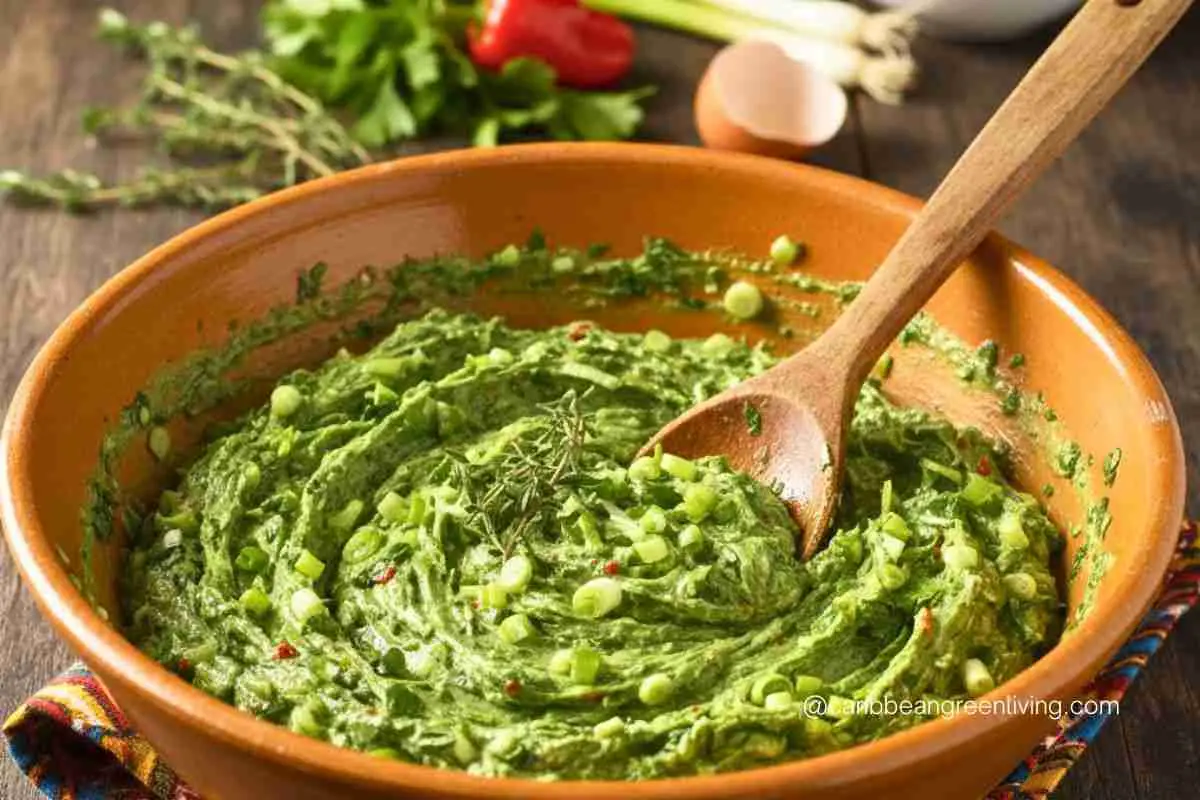
Extra Tips for Accra Success
Let’s get real: accras may be humble little fritters, but they’re picky about their environment. Here’s how to get them just right:
- Flour matters: Not all flour brands are the same. Use one you trust and are familiar with.
- Stick to all-purpose: Other flours (like whole wheat, almond, or coconut) won’t give you the same texture. The magic is in that soft, chewy interior with a crisp exterior — don’t mess with it.
- Oil matters too: Always use vegetable oil or another neutral oil with a high smoke point. Coconut oil, while trendy, isn’t ideal here.
- Test before you go big: Drop 2–3 small scoops into the hot oil before frying a full batch. Adjust thickness or seasoning if needed.
- Don’t crowd the pot: Accras need room to puff. Crowding = soggy and sad.
- Monitor the oil temp: Too hot and they’ll burn outside and stay raw inside. Too cool and they’ll absorb too much oil. Keep it medium-high and steady.
- If your batter is too thin: Add a little more flour, especially if you’ve added juicy vegetables or fish. The batter should be thick enough to hold its shape when scooped.
- Use fresh herbs: Dried herbs just won’t give the same brightness and depth of flavor. Fresh parsley, thyme, and scallions are the way to go.
- Room temp is key: Use room-temperature water and eggs for a smoother batter and better rise.
- No leftovers, sorry! Because the batter contains egg and baking soda, it won’t keep well. Fry it all the same day — leftover batter won’t puff up again tomorrow.
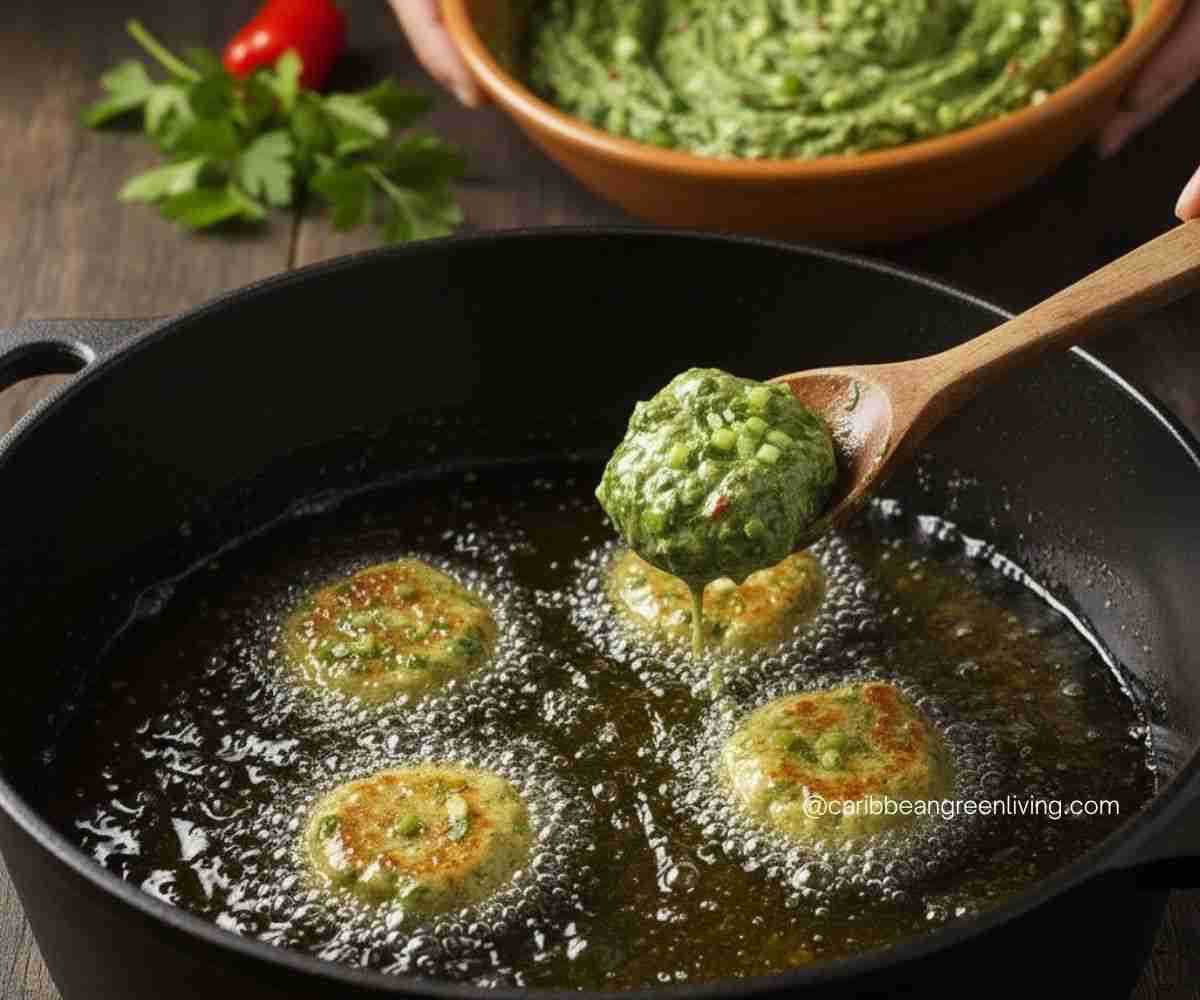
Customizing Your Accras: Suggested Add-ons
The pâte à accras is a perfect, neutral canvas ready for your favorite fillings. Once your batter is made and has rested (Step 4), gently fold in your prepared add-ons before whipping in the egg white (Step 5).
Here are great ideas for customizing your fritters:
Vegetables & Legumes (Savory & Plant-Based)
For vegetable accras, grate or finely chop your vegetables and squeeze out any excess moisture before adding them to the batter.
- Classic Malanga: Grate 1 cup of peeled malanga (or taro root) and squeeze dry. This is the traditional base for Haitian akras.
- Carrot: Use 1/2 cup of finely grated carrot for a milder, sweeter flavor and beautiful flecks of orange.
- Eggplant: Dice 1/2 cup of eggplant into very small pieces and sauté briefly to soften and remove excess moisture before adding to the batter.
- Chayote: Grate 1/2 cup of peeled chayote (christophine) and squeeze out thoroughly to remove excess water. This adds a delicate flavor and tender texture.
- Black-Eyed Peas (Akara Style): Soak and peel 1 cup of dried black-eyed peas, then purée them into a paste before mixing them into the batter. This honors the West African tradition.
- Spinach: Finely chop 1/2 cup of fresh spinach.
Meat & Poultry (Heartier Fritters)
For protein add-ons, make sure they are pre-cooked, cooled, and finely shredded or ground to mix easily into the thick batter.
- Ground Beef/Pork: Use 1/2 cup of cooked, well-drained, and seasoned ground meat. Be sure to pat it dry to avoid making the batter too thin.No-Fail Pâte à Accras Recipe
- Shredded Chicken: Use 1 cup of finely shredded, pre-cooked chicken breast or thigh. Ensure it’s seasoned (perhaps with a little of your epis base) for maximum flavor.
Seafood Add-ons
For seafood accras, especially with firm, potentially chewy proteins like conch, proper preparation is key to achieving a tender fritter.
- Conch (Lambi Accras): Use 1 cup of conch meat that has been properly prepared. Conch must be tenderized first—either by pounding it thinly with a mallet or by boiling/pressure cooking it—and then finely minced or pulsed in a food processor (do not over-process into a paste). This preparation ensures it cooks quickly and isn’t tough in the finished fritter.
- Saltfish (Classic Morue): The most popular choice. Soak and boil 1 cup of salted codfish to remove excess salt, then flake or shred it finely before adding it to the batter.
- Shrimp: Use 3/4 cup of small, finely chopped, cooked, or raw shrimp. If using raw, ensure they are minced finely so they cook completely during frying.
This base recipe for accra batter (aka pâte à accras) is flexible and flavorful — perfect for saltfish, chicken, or veggie accras. Make it in advance, and you’ll be that person who always has a little magic in the fridge waiting to be fried.
Tips for Adding Fillings to Your Pâte à Accras
Adding fillings is where you personalize your accras, but it requires careful preparation to maintain the perfect batter consistency and texture.
General Golden Rules
- Mind the Moisture: This is the most critical rule. Any excess liquid from vegetables or seafood will thin your batter, resulting in flat, greasy fritters instead of light, puffy ones.
- Action: Always squeeze, drain, or pat dry your added ingredients before folding them in.
- Keep it Fine: Ingredients should be finely minced, grated, or shredded. Large chunks won’t cook fully, can make the fritters dense, and may prevent the batter from puffing up evenly.
- Action: Aim for pieces roughly the size of the minced herbs in the original recipe.
- Pre-Cook Tough Proteins: Proteins like chicken, ground meat, and especially conch, must be pre-cooked and cooled before mixing into the batter. The quick deep-fry is not enough time to safely or thoroughly cook dense ingredients.
Tips for Specific Add-ons
For Root Vegetables (Malanga, Chayote, Carrots):
- Grate finely, then squakaraeeze out excess water. Use a clean kitchen towel or cheesecloth to press out liquid until the vegetables are nearly dry. Root vegetables release a lot of water, which will ruin the batter’s texture.
For Delicate Vegetables (Eggplant, Spinach):
- For eggplant, dice and briefly sauté to remove moisture and soften slightly. For spinach, chop and wring dry. These ingredients can turn the batter watery or remain too firm if not pre-treated.
For Seafood (Conch, Saltfish, Shrimp):
- Conch: Tenderize and mince the conch finely (pounding is required) to ensure a pleasant bite, as conch is notoriously tough.
- Saltfish (Morue): After boiling/soaking, shred it finely and press out any remaining water before adding it to the batter. This prevents pockets of water from releasing during frying.
- Shrimp: Chop small and ensure they are dry.
For Shredded Meats (Chicken, Pork):
- Use meat that is cooled, finely shredded, and well-seasoned. If frozen, thaw completely and pat dry. This ensures the meat remains tender and doesn’t introduce unwanted liquid or chill the batter.
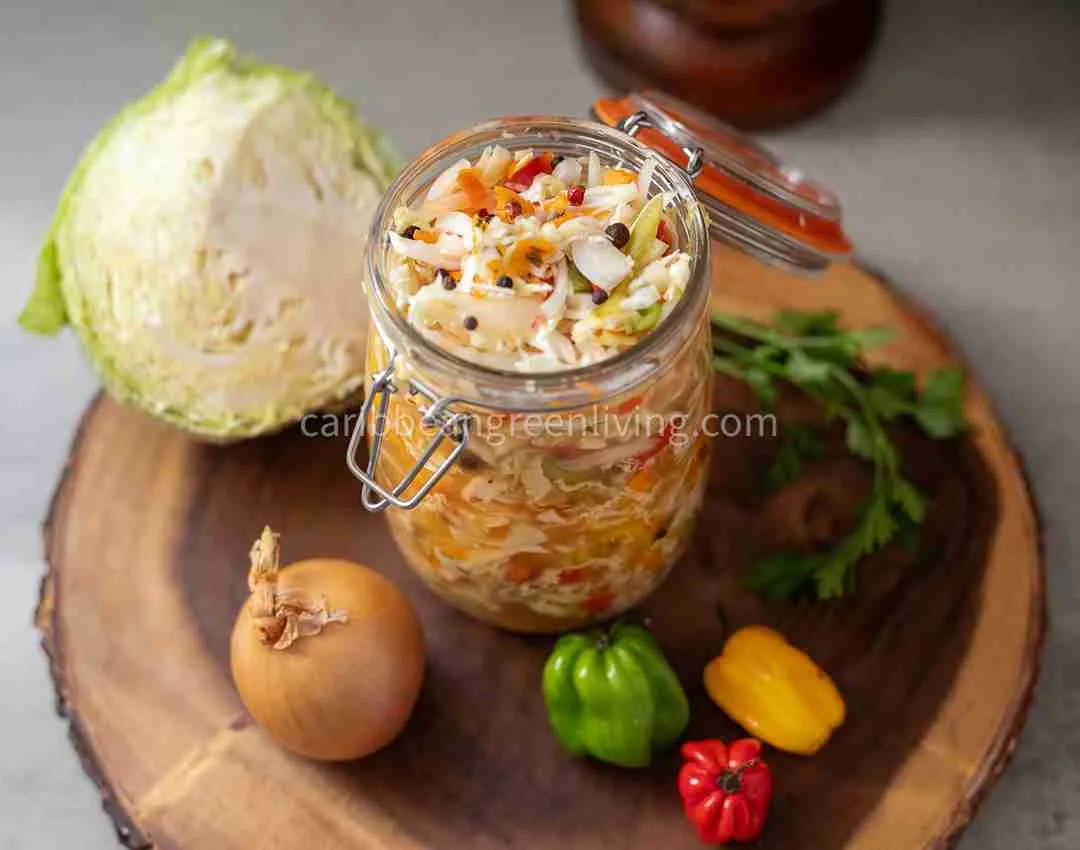

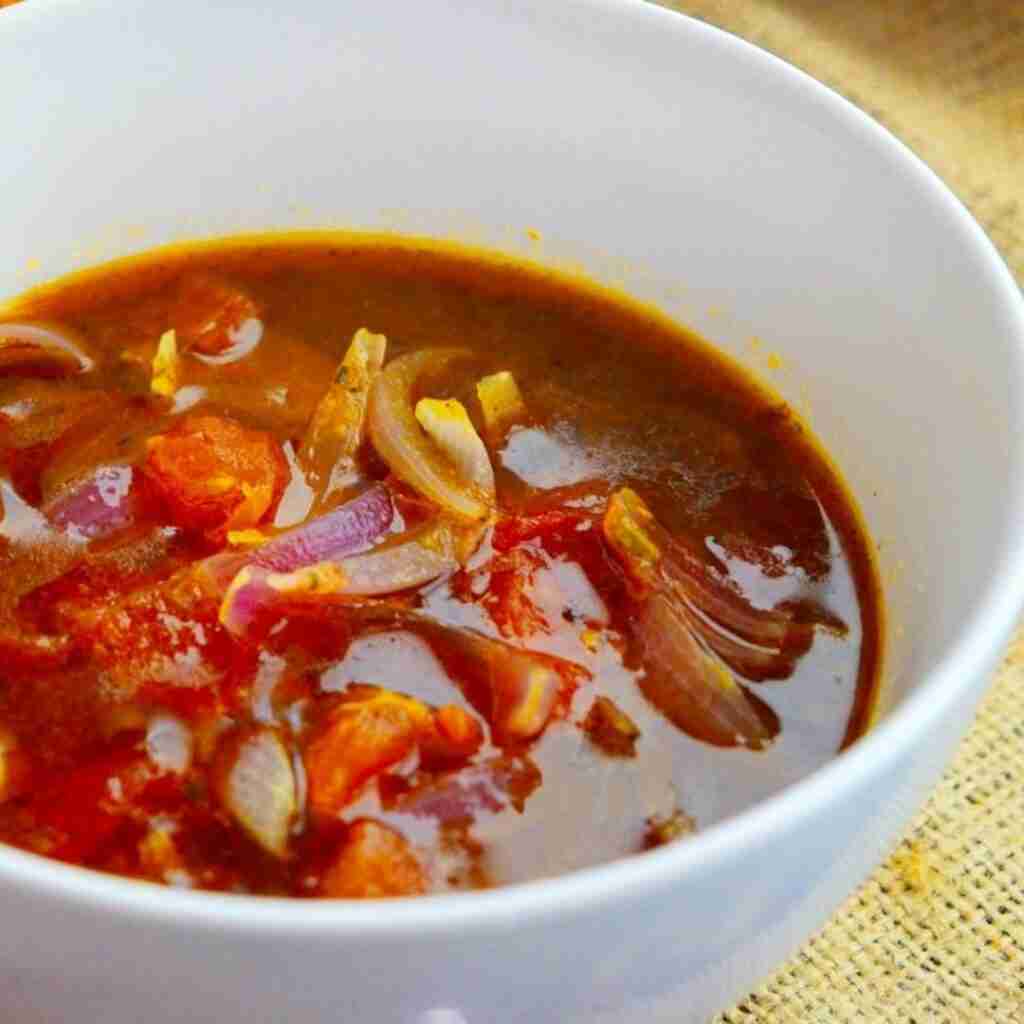

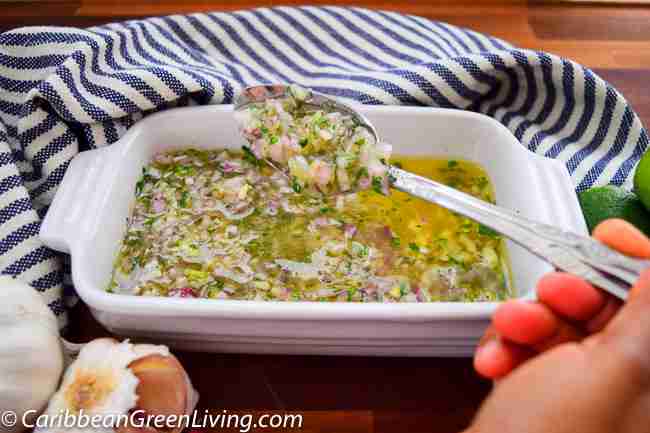
Perfect Pairings: What to Serve with Accras
Accras are bold, salty, and spicy, making them the perfect candidate for a contrasting dip or a sharp, acidic counterpoint. These classic pairings elevate the fritters from a simple snack to a vibrant Caribbean experience.
Classic Dips & Sauces (The Essential Accompaniments)
- Pikliz (Haitian Spicy Slaw): This is the classic pairing for Haitian akras. It’s a fiery, pickled vegetable relish made with shredded cabbage, carrots, onions, and lots of Scotch bonnet pepper, all marinated in a sharp, tangy vinegar brine. The crunch and acid of the relish perfectly cut through the richness and oiliness of the fried fritters.
- Sauce Chien (Dog Sauce): This fresh, vibrant, herbaceous sauce comes from the French Caribbean (Martinique/Guadeloupe). It’s made with lime juice, oil, garlic, scallions, parsley, hot water, and a touch of minced pepper. It offers a bright, garlicky, and fresh flavor that contrasts the deep-fried quality without adding creaminess.
- Traditional Hot Sauce/Pepper Sauce: Any high-quality Caribbean-style pepper sauce, often made with Scotch bonnet, vinegar, and sometimes fruit, is a simple, direct way to amplify the fritter’s heat. The vinegar base adds necessary tanginess.
- Spicy Aioli or Mayonnaise-Based Dip: A creamy dip infused with garlic, lime juice, and a dash of hot sauce or minced pepper. The richness and coolness of the mayo-based dip balances the internal heat of the accra, while the garlic and lime enhance the flavor.
Other Flavorful Condiments
- Creole Sauce (Sauce Créole): A spicy, cooked tomato-based sauce, sometimes featuring diced onions, bell peppers, and fresh thyme, offering a vibrant, chunky texture and a warm, savory contrast.
- Mango Chutney: The sweetness and mild acidity of a mango chutney, often with a hint of spice, pairs beautifully with the savory, sometimes salty, fish fritters.
- Sweet and Sour Sauce: A simple quick sauce with sugar, vinegar, and a base of ketchup or tomato paste provides a sticky, contrasting flavor, particularly popular with Jamaican fritters.
- Lime Wedges: Sometimes, all you need is a fresh squeeze of lime juice right over the hot accras for a burst of bright, clean acidity.
Final Thoughts
Accras are more than just fritters — they’re a vibe, a tradition, a memory. And now, you’ve got the ultimate batter recipe to make them yours. This pâte à accras is versatile, reliable, and gives you the freedom to add your own flair — whether you’re team fish, team veggie, or team “whatever’s in the fridge.”
So get that oil hot, grab your herbs, and fry something fabulous.
Here’s the No-Fail recipe:

Pâte à Accras: The No-Fail Caribbean Fritter Batter You’ll Want on Repeat
Ingredients
- 200 g all-purpose flour
- 1 glass of water about 200 ml, room temperature
- 1 pinch of baking soda
- 1 scallion sliced thin
- 1 garlic clove
- 1/2 hot pepper like Scotch bonnet or habanero, slice thin
- 2-3 fresh chives thinly sliced
- A few sprigs of thyme chopped
- A handful of parsley finely chopped
- 1 egg separated (room temperature)
- Salt to taste
Instructions
- Make the batter: In a bowl, whisk the flour. Slowly add room-temperature water while whisking to avoid lumps — you’re aiming for a thick, smooth batter.
- Add the flavor: Finely chop the scallion, garlic, hot pepper, chives (if using), thyme, and parsley. Add them to the batter with a pinch of salt.
- Incorporate the egg yolk: Stir it in until fully combined.
- Let it rest: Add your base ingredient (fish, chicken, or veggies) to the batter and let it rest for at least 15–30 minutes.
- Final step: Right before frying, add the pinch of baking soda and gently fold in the stiffly whipped egg white.
- Fry away: Heat vegetable oil in a deep pan or pot. Test with 2–3 spoonfuls first to make sure the oil is hot enough and the batter holds. Then continue frying in small batches to avoid crowding — the fritters need room to puff up! Fry until golden brown and delicious.
Notes
- Flour matters: Not all flour brands are the same. Use one you trust and are familiar with.
- Stick to all-purpose: Other flours (like whole wheat, almond, or coconut) won’t give you the same texture. The magic is in that soft, chewy interior with a crisp exterior — don’t mess with it.
- Oil matters too: Always use vegetable oil or another neutral oil with a high smoke point. Coconut oil, while trendy, isn’t ideal here.
- Test before you go big: Drop 2–3 small scoops into the hot oil before frying a full batch. Adjust thickness or seasoning if needed.
- Don’t crowd the pot: Accras need room to puff. Crowding = soggy and sad.
- Monitor the oil temp: Too hot and they’ll burn outside and stay raw inside. Too cool and they’ll absorb too much oil. Keep it medium-high and steady.
- If your batter is too thin: Add a little more flour, especially if you’ve added juicy vegetables or fish. The batter should be thick enough to hold its shape when scooped.
- Use fresh herbs: Dried herbs just won’t give the same brightness and depth of flavor. Fresh parsley, thyme, and scallions are the way to go.
- Room temp is key: Use room-temperature water and eggs for a smoother batter and better rise.
- Add ons
- No leftovers, sorry! Because the batter contains egg and baking soda, it won’t keep well. Fry it all the same day — leftover batter won’t puff up again tomorrow.
Tips for Adding Fillings to Your Pâte à Accras
Adding fillings is where you personalize your accras, but it requires careful preparation to maintain the perfect batter consistency and texture.General Golden Rules
- Mind the Moisture: This is the most critical rule. Any excess liquid from vegetables or seafood will thin your batter, resulting in flat, greasy fritters instead of light, puffy ones.
- Action: Always squeeze, drain, or pat dry your added ingredients before folding them in.
- Keep it Fine: Ingredients should be finely minced, grated, or shredded. Large chunks won’t cook fully, can make the fritters dense, and may prevent the batter from puffing up evenly.
- Action: Aim for pieces roughly the size of the minced herbs in the original recipe.
- Pre-Cook Tough Proteins: Proteins like chicken, ground meat, and especially conch, must be pre-cooked and cooled before mixing into the batter. The quick deep-fry is not enough time to safely or thoroughly cook dense ingredients.
Tips for Specific Add-ons
For Root Vegetables (Malanga, Chayote, Carrots):- Grate finely, then squeeze out excess water. Use a clean kitchen towel or cheesecloth to press out liquid until the vegetables are nearly dry. Root vegetables release a lot of water, which will ruin the batter’s texture.
- For eggplant, dice and briefly sauté to remove moisture and soften slightly. For spinach, chop and wring dry. These ingredients can turn the batter watery or remain too firm if not pre-treated.
- Conch: Tenderize and mince the conch finely (pounding is required) to ensure a pleasant bite, as conch is notoriously tough.
- Saltfish (Morue): After boiling/soaking, shred it finely and press out any remaining water before adding it to the batter. This prevents pockets of water from releasing during frying.
- Shrimp: Chop small and ensure they are dry.
- Use meat that is cooled, finely shredded, and well-seasoned. If frozen, thaw completely and pat dry. This ensures the meat remains tender and doesn’t introduce unwanted liquid or chill the batter.
Nutrition
Please keep in mind that nutritional information is a rough estimate and can vary greatly based on the products used.
Nutrition info is automatically generated and provided as a courtesy and as an estimate only.






